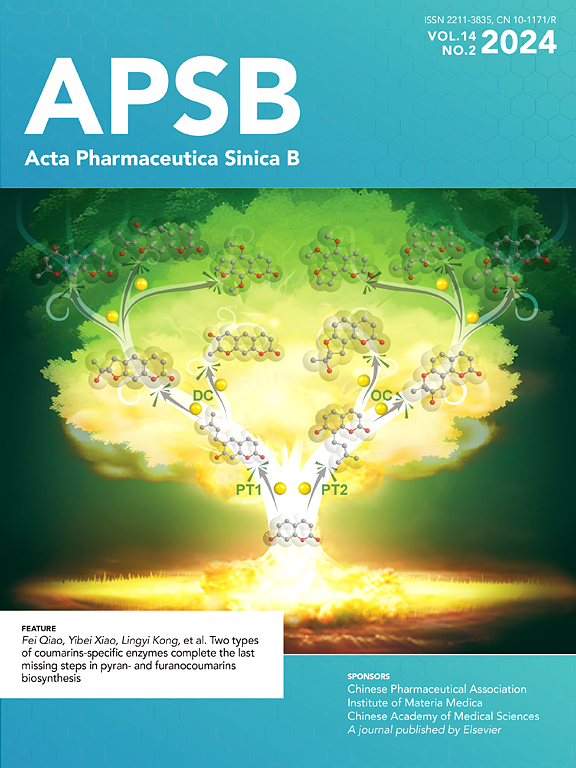Immune organoid for cancer immunotherapy
IF 14.6
1区 医学
Q1 PHARMACOLOGY & PHARMACY
引用次数: 0
Abstract
Cancer immunotherapy, which harnesses the patient's own immune system to target malignant cells, has shown remarkable promise in reducing tumor burden and extending survival. However, the complex tumor microenvironment (TME) limits therapeutic benefits to a subset of patients, making it challenging to develop accurate in vitro models for drug response prediction, drug discovery, and personalized medicine. Organoids, three-dimensional (3D) “mini-organs” derived from individual patients that faithfully recapitulate the structural, molecular, and gene expression profiles of primary tumors along with their complex TME in vitro, have emerged as powerful tools for patient-specific drug screening and therapeutic strategy development. Their versatility has led to widespread adoption across both clinical and basic cancer research. However, a key limitation of traditional organoid models is their lack of immune system components. Recent years have seen significant efforts to address this challenge through the integration of immune cells with organoids, aiming to create more physiologically relevant models. This review describes 3D culture methods for immunocompetent organoids, explores organoid–immune cell interactions, and discusses their applications in cancer immunotherapy and drug screening, along with recent advances in related clinical studies.

用于癌症免疫治疗的免疫类器官
癌症免疫疗法利用患者自身的免疫系统靶向恶性细胞,在减轻肿瘤负担和延长生存期方面显示出显著的前景。然而,复杂的肿瘤微环境(TME)限制了一小部分患者的治疗益处,这使得开发准确的体外模型来预测药物反应、药物发现和个性化治疗具有挑战性。类器官是来源于个体患者的三维(3D)“微型器官”,它忠实地概括了原发肿瘤的结构、分子和基因表达谱,以及它们在体外的复杂TME,已经成为患者特异性药物筛选和治疗策略开发的有力工具。它们的多功能性已经被广泛应用于临床和基础癌症研究。然而,传统类器官模型的一个关键限制是它们缺乏免疫系统成分。近年来,通过将免疫细胞与类器官相结合来解决这一挑战的努力取得了重大进展,旨在创建更多与生理相关的模型。本文综述了免疫活性类器官的三维培养方法,探讨了类器官与免疫细胞的相互作用,讨论了它们在癌症免疫治疗和药物筛选中的应用,以及相关临床研究的最新进展。
本文章由计算机程序翻译,如有差异,请以英文原文为准。
求助全文
约1分钟内获得全文
求助全文
来源期刊

Acta Pharmaceutica Sinica. B
Pharmacology, Toxicology and Pharmaceutics-General Pharmacology, Toxicology and Pharmaceutics
CiteScore
22.40
自引率
5.50%
发文量
1051
审稿时长
19 weeks
期刊介绍:
The Journal of the Institute of Materia Medica, Chinese Academy of Medical Sciences, and the Chinese Pharmaceutical Association oversees the peer review process for Acta Pharmaceutica Sinica. B (APSB).
Published monthly in English, APSB is dedicated to disseminating significant original research articles, rapid communications, and high-quality reviews that highlight recent advances across various pharmaceutical sciences domains. These encompass pharmacology, pharmaceutics, medicinal chemistry, natural products, pharmacognosy, pharmaceutical analysis, and pharmacokinetics.
A part of the Acta Pharmaceutica Sinica series, established in 1953 and indexed in prominent databases like Chemical Abstracts, Index Medicus, SciFinder Scholar, Biological Abstracts, International Pharmaceutical Abstracts, Cambridge Scientific Abstracts, and Current Bibliography on Science and Technology, APSB is sponsored by the Institute of Materia Medica, Chinese Academy of Medical Sciences, and the Chinese Pharmaceutical Association. Its production and hosting are facilitated by Elsevier B.V. This collaborative effort ensures APSB's commitment to delivering valuable contributions to the pharmaceutical sciences community.
 求助内容:
求助内容: 应助结果提醒方式:
应助结果提醒方式:


